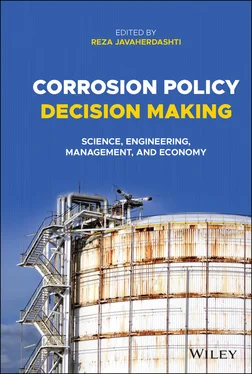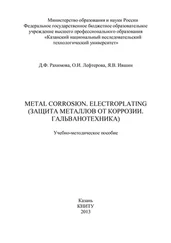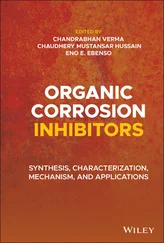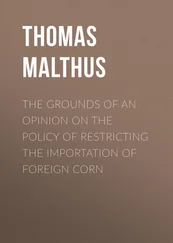Corrosion Policy Decision Making
Здесь есть возможность читать онлайн «Corrosion Policy Decision Making» — ознакомительный отрывок электронной книги совершенно бесплатно, а после прочтения отрывка купить полную версию. В некоторых случаях можно слушать аудио, скачать через торрент в формате fb2 и присутствует краткое содержание. Жанр: unrecognised, на английском языке. Описание произведения, (предисловие) а так же отзывы посетителей доступны на портале библиотеки ЛибКат.
- Название:Corrosion Policy Decision Making
- Автор:
- Жанр:
- Год:неизвестен
- ISBN:нет данных
- Рейтинг книги:4 / 5. Голосов: 1
-
Избранное:Добавить в избранное
- Отзывы:
-
Ваша оценка:
- 80
- 1
- 2
- 3
- 4
- 5
Corrosion Policy Decision Making: краткое содержание, описание и аннотация
Предлагаем к чтению аннотацию, описание, краткое содержание или предисловие (зависит от того, что написал сам автор книги «Corrosion Policy Decision Making»). Если вы не нашли необходимую информацию о книге — напишите в комментариях, мы постараемся отыскать её.
Explore the science, management, economy, ecology, and engineering of corrosion management and prevention Corrosion Policy Decision Making
Corrosion Policy Decision Making
Corrosion Policy Decision Making — читать онлайн ознакомительный отрывок
Ниже представлен текст книги, разбитый по страницам. Система сохранения места последней прочитанной страницы, позволяет с удобством читать онлайн бесплатно книгу «Corrosion Policy Decision Making», без необходимости каждый раз заново искать на чём Вы остановились. Поставьте закладку, и сможете в любой момент перейти на страницу, на которой закончили чтение.
Интервал:
Закладка:
Dry abrasion blasting with silica sand, copper slag, steel grits, etc. is the most correct and common method of field and workshop surface preparation. In a scientific research, the author investigated the surface preparation factors affecting the primer adhesion to steel substrate; the primer was an epoxy zinc phosphate with a dry thickness of 60 μm. The surface was prepared by different methods. The results are according to Table 2.1. Primer adhesion on all samples was acceptable, however, there was a noticeable difference between the adhesions of the primer to the steel surface prepared by different methods. Between some common methods of surface preparation, abrasive blasting especially by sand, to the degree of cleanness of Sa3, shows the highest quality on the paint adhesion.
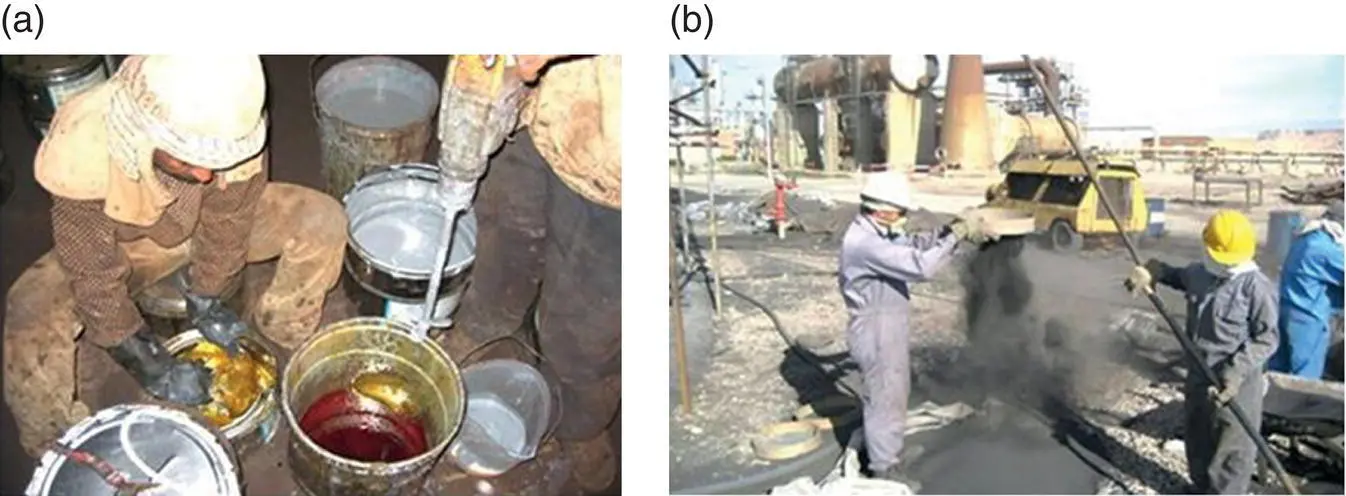
Figure 2.15 Examples of unqualified workers.
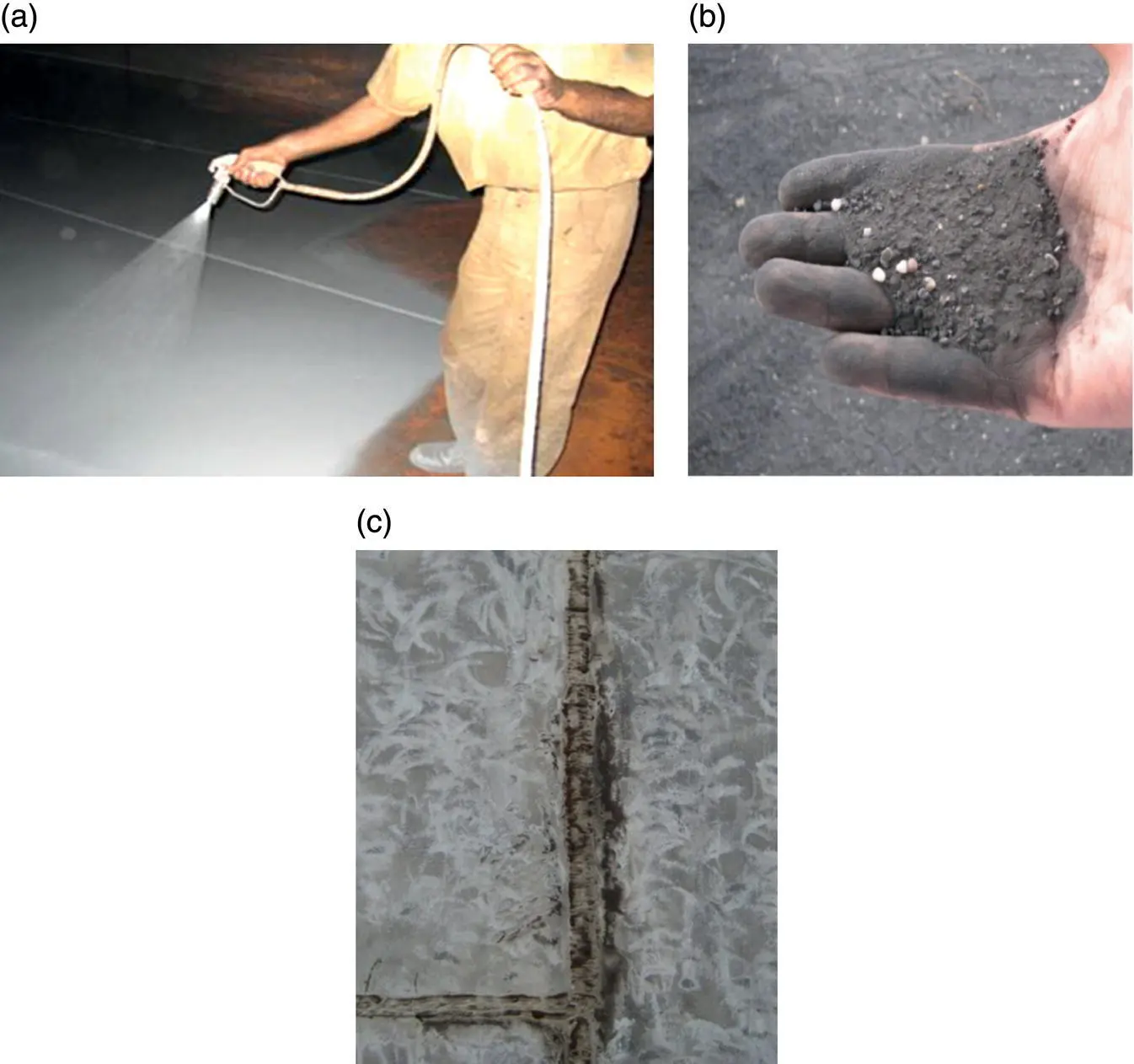
Figure 2.16 Some weakness of the surface preparation. Paint application on rusted surface (left). Unsuitable abrasives and reuse of them several times (right). Weak surface preparation on weld lines (down).
Table 2.1 Adhesion of a common zinc phosphate epoxy primer on the steel surfaces prepared with several methods.
| Preparation methods | Adhesion (MPa)ASTM D4541 | Disbanding condition |
|---|---|---|
| Washing with white sprite | 1.73 | Paint layer from metal surface |
| Wire brush ST3 | 3.19 | Paint layer from metal surface |
| Weak acid washing | 2.89 | Paint layer from metal surface |
| Hard acid washing | 4.48 | Paint layer from metal surface |
| Phosphating | 4.30 | Paint layer from metal surface |
| Wet sand blast, water blast | 8 | Paint layer from metal surface |
| Dry sand blast Sa3 | 11.63 | Paint layer from metal surface |
In other research, the effect of different types of abrasives on steel preparation was investigated. Physical and chemical properties of tested abrasives are discussed in [17–19].
Properties of some abrasives are determined according to Table 2.2. In a series of tests, the author examined and compared the adhesion of a zinc phosphate epoxy primer with the same thickness on steel sheets that were prepared with these different abrasives. Results are summarized in Table 2.3.
Often, the functional performance of abrasives, such as the effect on primer adhesion is very important. It affects the mechanical stability of the film, as well as its chemical resistance, especially when the film is exposed to humid and saline environments during service time. The author investigated the effect of a number of abrasives on cured film performance by doing several tests. For that, some samples were blasted by different abrasives. They were coated with the same paint, having nearly dry film thickness. Then they were tested in a humidity chamber according to ASTM D2247, and in a salt spray chamber according to ASTM B117 [20, 21].
In these experiments, silica sand compared with different abrasives used for blasting surface. A noteworthy point about carbon steel samples prepared with copper slags was that their particles trapped in all samples. Slag particles were observed which could not washed out even by using air pressure (five bar pressure) and washing with solvent. However, for samples prepared with silica sand, leaving excess particles from the surface with compressed air were easily and completely removed from the surface. All samples were coated with the same paint layer with a similar dry film thickness.
Table 2.2 Properties of tested abrasives in blasting.
| Test | Standard | Result for all samples |
|---|---|---|
| Hardness (mohz) | SSPC‐AB‐1 | At least 6 |
| Weight change on ignition | SSPC‐AB‐1 | Max. 5% |
| Oil content | ASTM D‐7393 | No visible |
| Specific gravity | ASTM C‐128 | Min. 2.5 |
| Moisture content | ASTM C‐566 | 0.5%< |
| Water soluble contaminants | ASTM D‐4940 | <1000 μs/cm |
Table 2.3 Effect of abrasives on adhesion of primer at humid and salty environments.
| Abrasives | Adhesion test before exposureASTM D4541Psia | Adhesion test; 1500 hours salt spray and 24 hours dryingASTM D4541 Psia | Adhesion test; 1500 hours humidity and24 hours dryingASTM D4541Psia |
|---|---|---|---|
| Copper slag Sample A | 1687 | 528 | 1603 |
| Copper slag Sample B | 1541 | 486 | Test error |
| Copper slag Sample C | 1569 | 388 | 1160 |
| Copper slag Sample D | 1446 | 516 | 1223 |
| Cupper slag Sample E | 1355 | 422 | 1306 |
| Supper slag Sample F | 1525 | 1329 | 1385 |
| Silica sand Sample G | 1687 | 1855 | 989 |
| Silica sand Sample H | 1900 | 1917 | 1898 |
As seen in the Table 2.3, after complete curing and before beginning the corrosive tests, the adhesion of all samples was in acceptable range. Separation of all samples were with an interlayer that did not return to the abrasive quality. The sheets were prepared with different abrasives, placed and tested for resistance in a humidity cabin environment at 100% humidity, and similarly in a salt spray chamber for 1500 hours, separately. The results were interesting; the samples prepared with abrasive silica sand showed a significantly better resistance than others. In addition, they had more strength adhesion at the end of the laboratory exposure tests. The results are shown according to Table 2.3. Therefore, type, shape, and size of the abrasive material have a significant effect on long life of paints in the abrasive blasting method.
2.2.5.8 Technical Painting Operations
Painting application requires special skills; the inexpert technician can lead to the destruction and complication of the film. Examples of paint application problems are shown in Figure 2.17. It is necessary for the executors be aware of the causes of paint defects and the method of avoiding, eliminating, and correcting these complications.

Figure 2.17 Some examples of paint application problems. Rusting on primer due to thin primer layer (a). Running of paint and settling of dirt due to adjacent blasting operation (b).
Many paint defects are mainly related to the method of their application. The wrong choice of hardener and thinner for paints, incorrect mixing of paint components, and wrong choice of different layers of a paint system are the most common causes of complication in paint application. Accuracy at the important points in the catalog can cut problems. Lifting, orange peel, overspray, pinholes, spatter coat, etc. are some of the complications that may occur due to these problems [7].
Excessive hot or cold temperature of the substrate, high humidity, dust, and local pollution are other factors that may cause complications during paint application. Adherence to implementation instructions greatly reduces these problems. Complications such as amine blushing, blushing, holidays, rusting, etc. are observed in these conditions [7].
Читать дальшеИнтервал:
Закладка:
Похожие книги на «Corrosion Policy Decision Making»
Представляем Вашему вниманию похожие книги на «Corrosion Policy Decision Making» списком для выбора. Мы отобрали схожую по названию и смыслу литературу в надежде предоставить читателям больше вариантов отыскать новые, интересные, ещё непрочитанные произведения.
Обсуждение, отзывы о книге «Corrosion Policy Decision Making» и просто собственные мнения читателей. Оставьте ваши комментарии, напишите, что Вы думаете о произведении, его смысле или главных героях. Укажите что конкретно понравилось, а что нет, и почему Вы так считаете.
